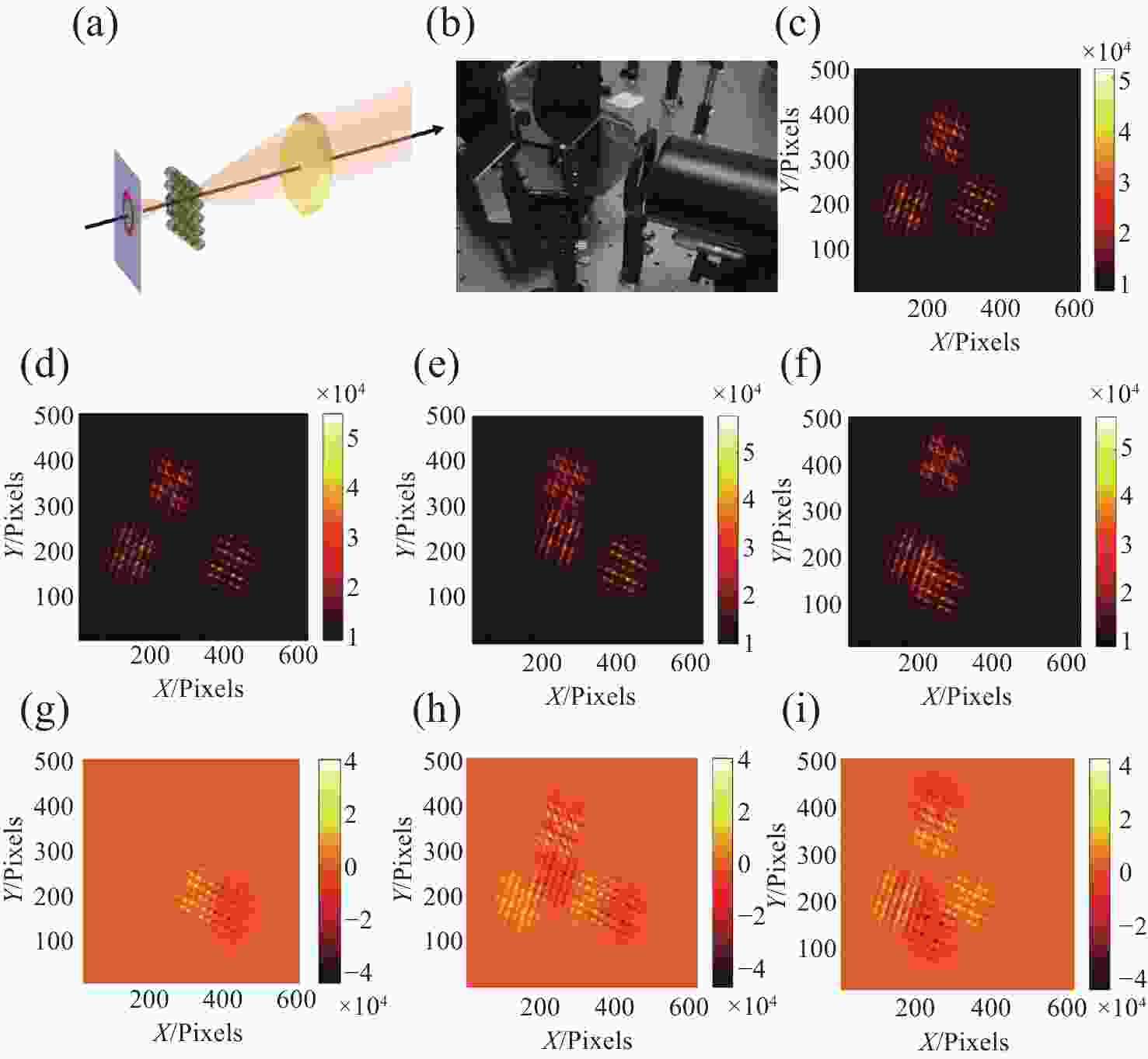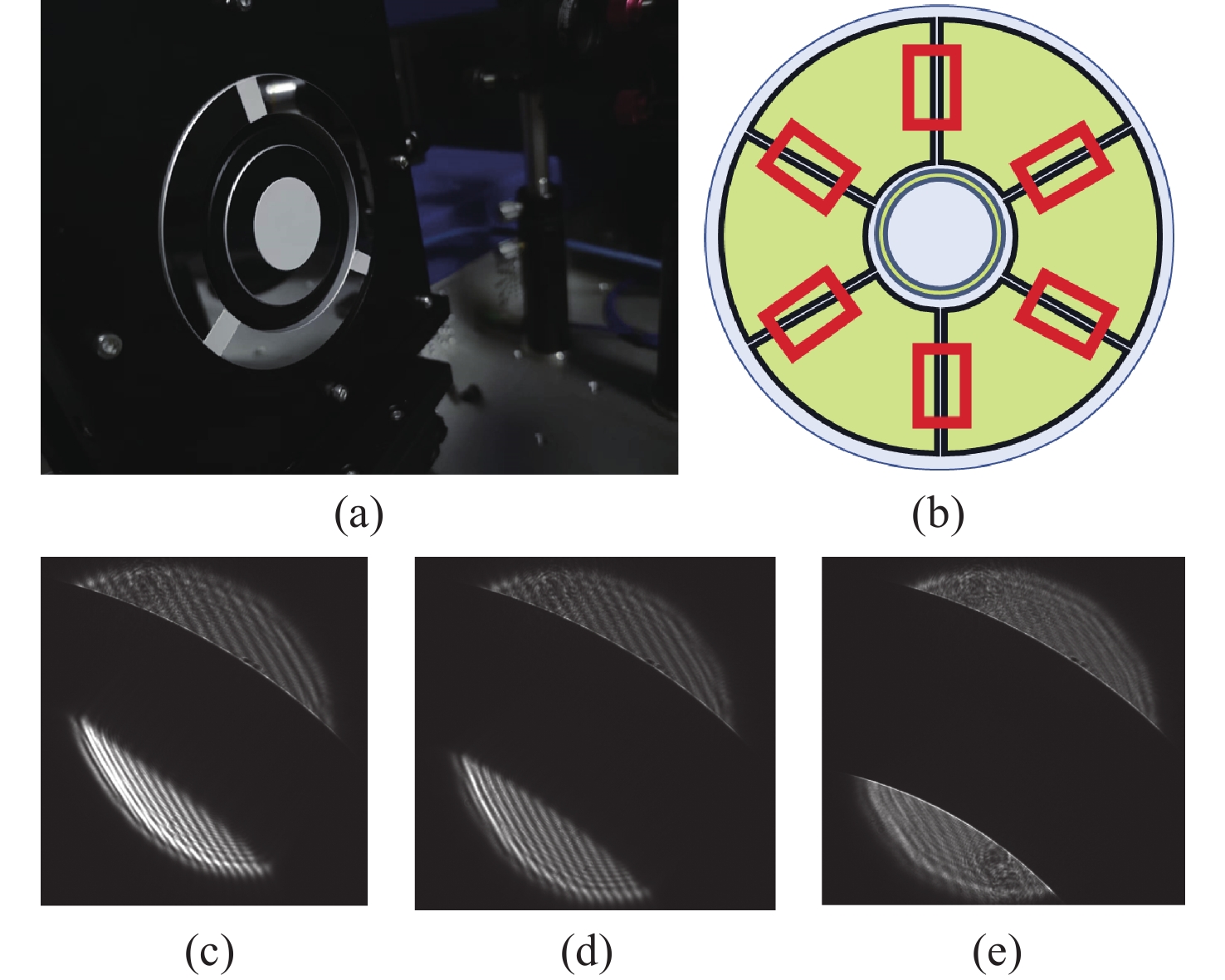A benchmark construction method for large aperture circular segmented optical systems
-
摘要:
为了更好地对大口径分段望远镜进行集成检测与稳定性保持基准构建,本文提出一种大口径环形分段光学系统基准构建方法。首先,采用局部光瞳投射的方式实现光瞳对准映射;其次,利用微透镜阵列构建系统共焦空间基准;之后,基于环带整体调控模式,采用共焦与曲率半径联合分析,实现曲率半径与系统对准的共同调节;最后,利用白光干涉所形成的条纹包络进行粗共相探测,并利用通道光谱方法实现粗共相与精共相间的精度衔接,空间共焦基准定位精度优于125 μm,共相基准覆盖范围优于20 μm,精度优于0.5 μm,光谱基准不确定度优于5%。实现了不同时空特征扰动的分层次、多模态抑制,利用以上共基准原位测量新方法有效提升了光学系统原位计量检测精度并缩短了溯源链长度,增加了检测效率与准确度。
Abstract:To realize integration detection and construct stability maintaining benchmark for large apertures of segmented telescopes, we propose a benchmark construction method. In this study, we use local pupil projection to perform pupil alignment mapping. In addition, we construct a system confocal spatial benchmark using a microlens array. On the basis of annular whole-body control mode, a joint analysis method of confocal and curvature radius enables joint adjustment of the curvature radius and system alignment. Finally, the stripe envelope formed by white light interference is used for coarse common phases detection, and the channel spectral method is used to obtain precise connection between coarse and fine common phases. Additionally, the spatial confocal reference positioning exhibits an accuracy of less than 125 μm, and the common phase reference has a coverage range better than 0.5 μm within a 20-μm-range. Furthermore, the uncertainty of the spectral reference is less than 5%. We have effectively improved the accuracy of optical system in-situ measurement by achieving hierarchical and multimodal suppression of disturbances from different spatiotemporal features. We have shortened the length of the traceability chain and increased the efficiency and accuracy of detection by utilizing the new method of common reference in-situ measurement.
-
Key words:
- segmented mirror /
- wavefront aberration /
- common reference /
- large aperture telescope
-
图 6 光子灯笼光谱测试验证实验。(a)~(c)1530 nm下,少模端模场分布与两方向截面;(d)~(f)1550 nm下,少模端模场分布与两方向截面;(g)~(i) 1570 nm下,少模端模场分布与两方向截面
Figure 6. Photon lantern spectrum testing verification. (a)~(c) At 1530 nm, the distribution of few-mode end mode field and cross sections; (d)~(f) at 1550 nm, the distribution of few-mode end mode field and cross sections; (g)~(i) at 1570 nm, the distribution of few-mode end mode field and cross sections
图 2 基于微透镜阵列的共焦检测结果。(a)系统原理图;(b)实验现场;(c)原始焦面光强分布;(d)~(f)不同共焦状态焦面光强分布;(g)~(i)光强差分
Figure 2. Co-focus detection results based on micro-lens array. (a) System schematic diagram; (b) experimental site; (c) intensity distribution of original focal plane; (d)~(f) intensity distribution of focal plane at different co-focus states; (g)~(i) intensity difference
-
[1] GOULLIOUD R, MCELWAIN M, BURDICK G M, et al. OpTIIX: An ISS-based testbed paving the roadmap toward a next generation, large aperture UV/optical space telescope[R]. 2012. [2] BASU S. Conceptual design of an autonomously assembled space telescope (AAST)[J]. Proceedings of SPIE, 2004, 5166: 98-112. doi: 10.1117/12.516464 [3] BOLCAR M R. The large UV/optical/infrared surveyor (LUVOIR): Decadal mission concept technology development overview[J]. Proceedings of SPIE, 2017, 10398: 103980A. [4] SIVARAMAKRISHNAN A, TUTHILL P, LLOYD J P, et al. The near infrared imager and Slitless spectrograph for the James Webb space telescope. IV. Aperture masking interferometry[J]. Publications of the Astronomical Society of the Pacific, 2023, 135(1043): 015003. doi: 10.1088/1538-3873/acaebd [5] CANUTO E, MUSSO F. Active angular stabilization of the GAIA space telescope through laser interferometry[J]. IFAC Proceedings Volumes, 2004, 37(6): 955-960. doi: 10.1016/S1474-6670(17)32302-9 [6] KIM D W, ESPARZA M, QUACH H, et al. Optical technology for future telescopes[J]. Proceedings of SPIE, 2021, 11761: 1176103. [7] 李斌, 杨阿坤, 邹吉平. 基于宽波段光源拼接镜新型共相检测技术研究[J]. 中国光学(中英文),2022,15(4):797-805. doi: 10.37188/CO.2021-0234LI B, YANG A K, ZOU J P. A new co-phasing detection technology of a segmented mirror based on broadband light[J]. Chinese Optics, 2022, 15(4): 797-805. (in Chinese). doi: 10.37188/CO.2021-0234 [8] BIASI R, MANETTI M, ANDRIGHETTONI M, et al. E-ELT M4 adaptive unit final design and construction: a progress report[J]. Proceedings of SPIE, 2016, 9909: 99097Y. doi: 10.1117/12.2234735 [9] AN Q CH, WU X X, LIN X D, et al. Alignment of DECam-like large survey telescope for real-time active optics and error analysis[J]. Optics Communications, 2021, 484: 126685. doi: 10.1016/j.optcom.2020.126685 [10] AN Q CH, ZHANG H F, WU X X, et al. Curvature sensing-based pupil alignment method for large-aperture telescopes[J]. IEEE Photonics Journal, 2023, 15(1): 6800705. [11] DAI Y CH, YANG D H, JIN ZH Y, et al. Active control of the Chinese giant solar telescope[J]. Proceedings of SPIE, 2014, 9145: 914550. [12] WU Z L, KANG I, YAO Y D, et al. Three-dimensional nanoscale reduced-angle ptycho-tomographic imaging with deep learning (RAPID)[J]. eLight, 2023, 3: 7. doi: 10.1186/s43593-022-00037-9 [13] SIROHI R. Shearography and its applications—A chronological review[J]. Light:Advanced Manufacturing, 2022, 3: 1. -






 下载:
下载:









